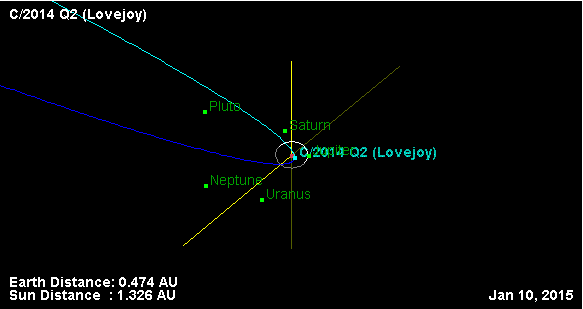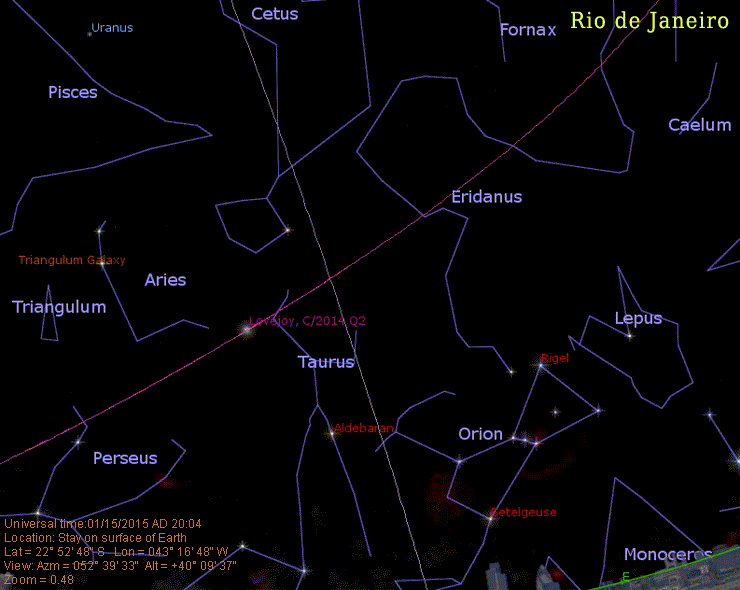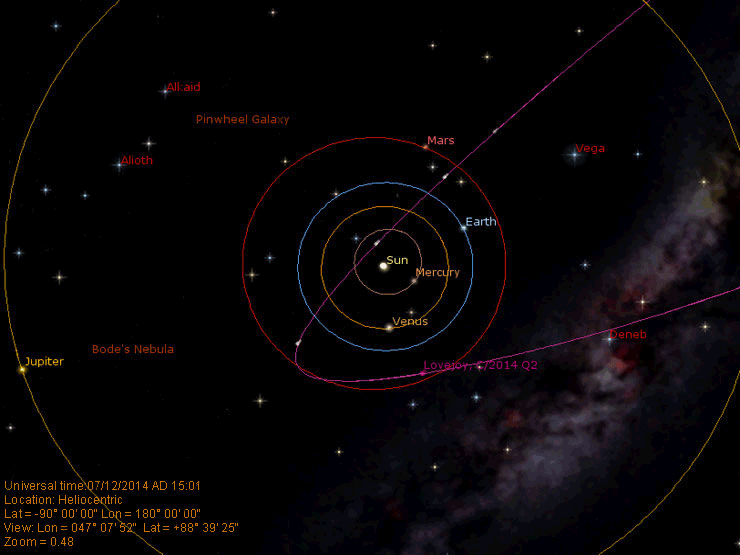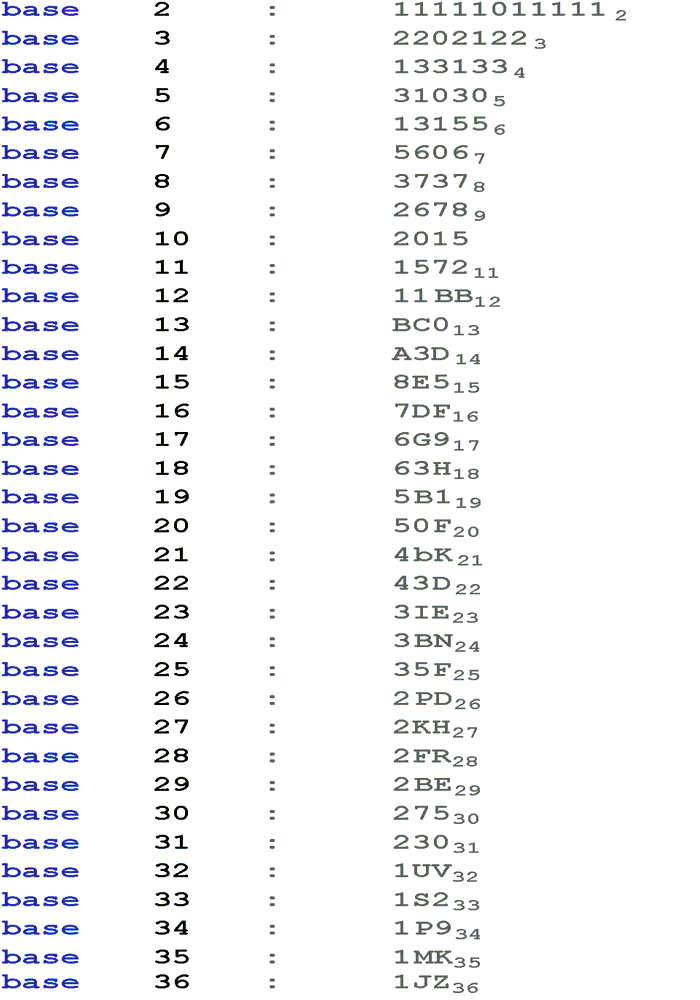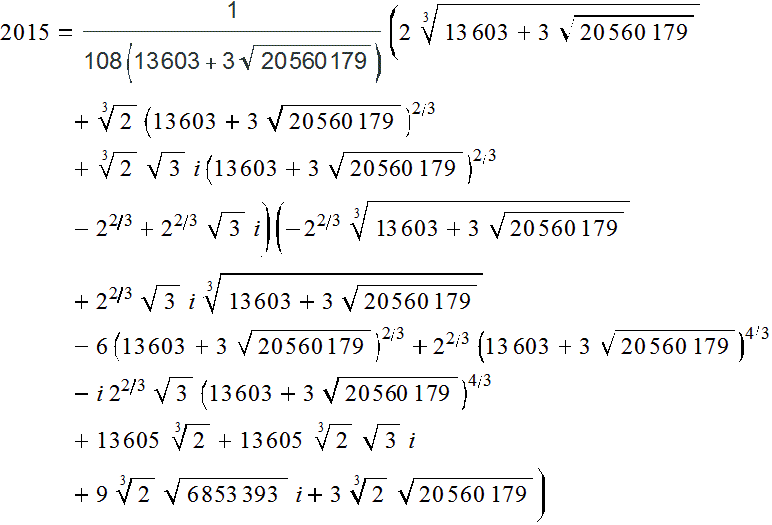I couldn’t help making a pun with the word Lovejoy (nice name by the way , could have added that Lovejoy has lovely colors too)… Anyway , this is another astronomy related event happening in 2015 : comet Lovejoy , officially named C/2014 Q2 (other Lovejoy comets were discovered earlier) , makes its nearest approach to planet Earth in January 2015 and is visible crossing the night sky.
First , here are four images of the orbit diagram of the comet in the solar system. The images are taken from the JPL Small-Body Database Browser. It is the same image zoomed in four times.
Second , we have the path of comet Lovejoy and its position in relation to the constellations , viewed from three cities. Two cities are located in the Northern Hemisphere (Paris and Alexandria) , and one city in the Southern Hemisphere (Rio de Janeiro).The dates ( all in January 2015) and the info related to the views are given at the bottom of each image.Images were made with RedShift and some Photoshop.
And the third set of three images gives the orbit and position of the comet in the solar system during three different dates (July 2014 , January 2015 and February 2016).
Lovejoy C/2014 Q2 has a solid icy nucleus with a width of 2 or 3 miles.The coma or cloud surrounding the frozen solid nucleus at the head of the comet is made of gas and dust . Comets have two tails , a dust tail and an ion or plasma tail , always pointing away from the Sun.The tail reaches its greatest extent at about the closest approach to the Sun . The design and the physics of the plasma tail are related to the interaction between the cometary plasma and the solar wind. The Lovejoy comet is not making too much dust and has a more developed ion gas tail.The blue color of the ion tail is explained by the presence of Carbon monoxide ions. Diatomic Carbon molecules fluorescing by solar ultraviolet radiation and the chemical compound cyanogen are mainly responsible for the observed or apparent green color of the comet.
Comet Lovejoy has a highly elliptical orbit like all comets ; it has a long orbital period (comets with long periods come from the Oort cloud) and has passed through the solar system about 11500 years ago. The comet’s orbit is a little changed due to gravitational perturbations by the planets , and it will not return into the solar system for about 8000 years.

